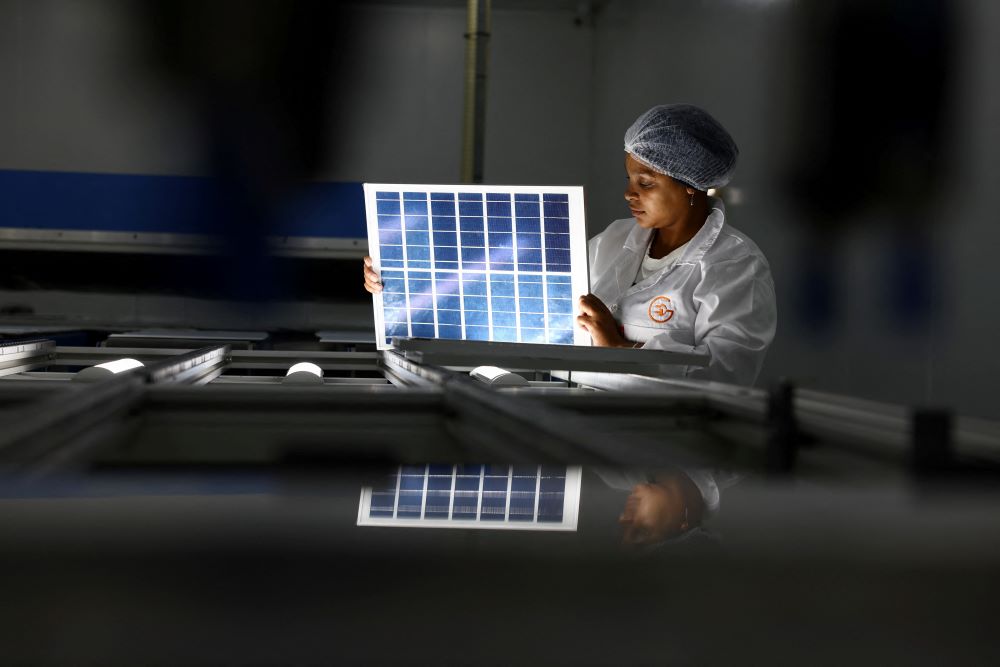The International Energy Agency (IEA) expects countries to fall even further short of a 2030 goal to triple renewable energy capacity due to policy changes by the Trump administration and China over the last year, a report by the Paris-based body showed on Tuesday.
At COP28 in Dubai two years ago, all the signatory governments of the Paris Agreement agreed to call on each other to contribute to tripling global renewable energy capacity by 2030 on 2022 levels as part of their efforts to limit global warming to 1.5C above pre-industrial levels.
In last year’s renewables report, IEA analysts said the world was on course to increase capacity 2.7 times in this period. But this year’s version, published on Tuesday, cut that forecast to 2.6 times.
IEA head Fatih Birol told a press conference the agency’s analysts have lowered their forecast for 2025-2030 renewables growth by 5% “mainly as a result of policy changes in the United States and in China”.
He said, however, the target to triple capacity was “still within reach”, urging governments to invest more in electricity grid infrastructure, speed up the permitting of new projects, de-risk renewable finance and invest in flexible electricity generation solutions such as batteries, hydropower and geothermal energy.
Trump’s tax credit cuts
The IEA slashed its forecast for US renewable growth over the next five years by nearly half, mainly because of President Donald Trump‘s cuts to tax credits for renewables, increased tariffs on some solar panel imports and pausing of approvals for renewables projects on federal lands and waters.
Both solar and wind capacity is still expected to grow every year in the US, but at a slower rate than had been expected prior to Trump’s policy changes.

The IEA cut its forecast for China‘s 2025-2030 renewables growth by 5% from last year’s report. While much smaller than the forecast for the US decline, the reduction has a big impact on the global target because China’s renewables growth is expected to be far higher than any other nation.
Birol said the downgrade stemmed from a planned change in the way Chinese authorities pay companies to provide electricity. In October 2024, the Chinese government announced it would stop offering fixed-price remuneration for renewable electricity, switching instead to market-based auctions.
“That’s why the profitability of the renewables projects – especially solar and wind – is expected to decline between 10% and 15% with the new policy. So with this, there will obviously be less interest, especially for technologies that are more expensive, such as offshore wind,” Birol said.
Bright spots for solar
Despite the overall decline, the IEA’s renewables growth forecasts for some countries improved, with Birol singling out Saudi Arabia, Pakistan, Indonesia, Vietnam and Thailand. Forecasts for India and the EU have also been revised upwards.
A separate report published on Tuesday by energy think-tank Ember found that renewables overtook coal as the biggest source of electricity generation in the first half of this year, and that – partially as a result – global emissions from the power sector fell 0.2%.
Ember’s Global Programme Director Raul Miranda said “the renewables revolution is unstoppable”.
“Exponential growth driven by rapidly declining costs has brought renewables to the stage where they are taking the lead role in the electricity system and starting to replace fossil generation at a global scale,” Miranda said.
As well as reducing emissions, the rise in renewables has saved governments $1.3 trillion since 2010 due to the reduced need to import coal and gas to provide electricity, according to the IEA.
Next week, the Brazilian presidency of COP30 and the International Renewable Energy Agency will launch their annual report on the goal to triple capacity.


